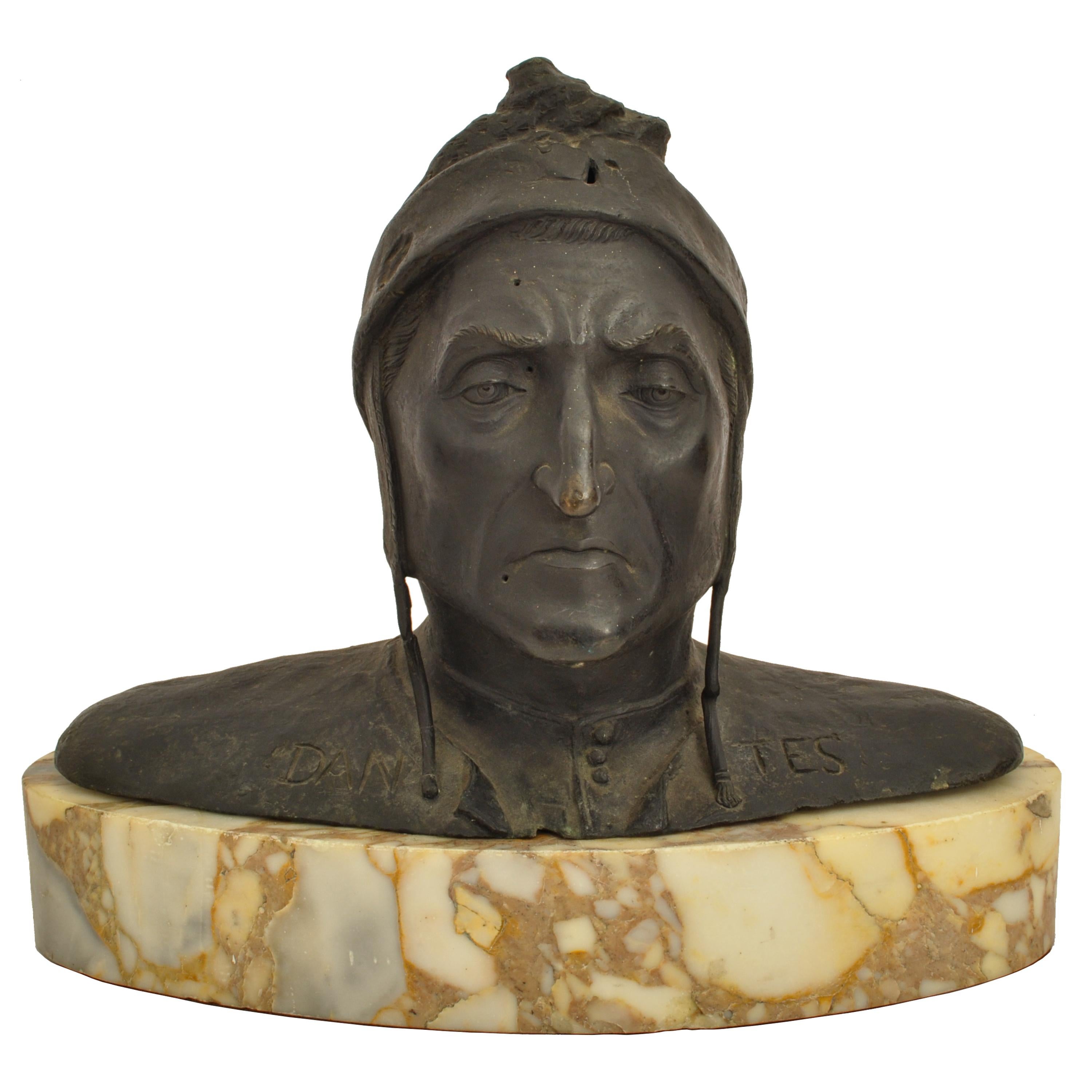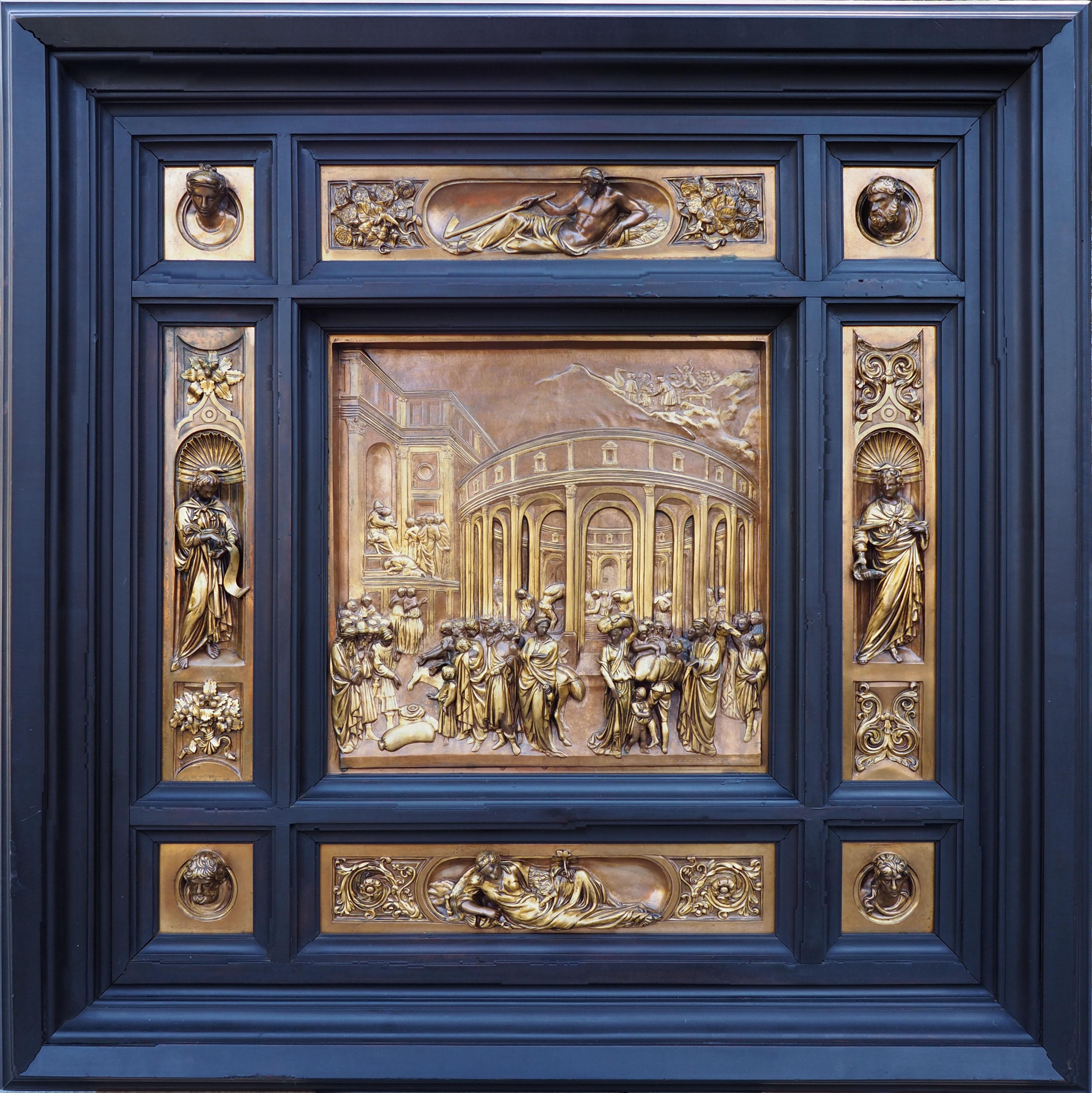Items Similar to Wilhelm KRIEGER (A) (1877-1945) Deer. Ca 1920
Want more images or videos?
Request additional images or videos from the seller
UnknownWilhelm KRIEGER (A) (1877-1945) Deer. Ca 19201920
1920
About the Item
The deer. Circa 1920.
Good quality bronze model of a doe, probably cast around 1970. Standing animal, looking forward, catching the scent, tense, dynamic posture characterized only by the position of the hind legs. Signed Krieger on the terrace. A beautiful, almost transparent golden-brown patina.
Title: Biche
Dimensions: 49 cm (h) x 54 cm (w) x 9 cm (d),
Material: Bronze
Signature: Krieger
Wilhelm Krieger (1877-1945)
Wilhelm Krieger was the son of painter Eduard Theodor Krieger. He was born on the East Frisian island of Norderney in the North Sea. He soon left the island and lived as a pupil with relatives in Norden, where he attended the gymnasium. However, he spent most of his life in Munich and the nearby town of Herrsching am Ammersee.
He left Norden without completing his studies and began a three-year apprenticeship as a decorative painter in Bremen. He left for Munich in 1896 without completing this apprenticeship. There, he enrolled at the Kunstgewerbeschule 1896/1897, but dropped out after one semester. He returned to painting and became a member of the Vereinigte Werkstätten München (a movement similar to the Arts and Crafts movement in Great Britain and the Vienna Secession). From 1901 onwards, Krieger learnt to sculpt and became familiar with bronze casting and the art of patination. Two years later, he became a partner in the Munich firm Zierhut & Krieger, which supplied arts and crafts items such as tableware and jewelry. He began to devote himself to animal sculpture and began freelancing for the Keramische Werkstätten in Herrsching, where he later met his future wife, Emilie Butters, a ceramist and art teacher.
In 1907, he became a member of the Munich Secession. This enabled him to present sculptures at exhibitions organized by the Munich Secession. It also enabled him to exhibit his work in the following years in Berlin, Bremen, Dresden, Düsseldorf and London.
In 1912, Krieger married Emilie Butters, then artistic director of the painting department of the Herrsching ceramics workshops. The couple had five children. In 1927, Wilhelm Krieger was awarded the honorary title of Professor by the Bavarian Ministry of Culture. Wilhelm Krieger's first solo exhibition took place in 1934 at the Städtische Galerie in Nuremberg, and was acclaimed by contemporaries. From 1937 to 1944, Krieger participated in the major annual exhibition of German art at the Haus der Kunst, organized in Munich at the instigation of Adolf Hitler. The Haus der Kunst was to present what the National Socialists considered to be "true" German art. Yet there is nothing "National Socialist" about Krieger's art.
Krieger, hard of hearing since childhood, relied on the power of his pictorial abilities. It was not speech or writing, but sculpture that enabled him to express himself. As a child, Wilhelm Krieger was very attached to the animals of his homeland, which he met on his daily walks. His sculptures mainly depict German mammals and often birds: owls, ducks, jackdaws, roosters, falcons, buzzards, eagles, condors, cranes or marabouts populated his studio, alongside other domestic animals such as cats, dogs, deer and sometimes monkeys. Krieger's contemporaries praised his sculptures for their purity of form and admired his ability to strongly stylize animals while capturing their naturalism. Krieger, a self-taught sculptor, created highly individual works of art that reflect his unique personal vision. He was interested in modeling animals without loading them with any symbolic meaning. Krieger has neither studied nor been influenced by other animal sculptors. Through stylization and simplification, Krieger has created vivid sculptures which, although very different, sometimes have, due to their softness, smoothness and austerity, an intensity somewhat similar to that of the work of French sculptor François Pompon.
Krieger's oeuvre comprises some 200 animal sculptures. His sculptures were cast in bronze. He also carved in limestone or marble. His work was very popular, and was also published in porcelain and stoneware by such notable companies as Hutschenreuther, Rosenthal and several other major porcelain manufacturers.
Unlike the porcelain sculptures, which were mass-produced by model-makers in porcelain factories far from the artist's home, it is the bronzes that demonstrate Krieger's great craftsmanship and skill. He did not miss the opportunity to chisel the surfaces of the bronzes himself, to give the sculptures the final touch and surface color. Experts praise the unusual, warm color and finely detailed, elaborate surface treatment of Krieger's works.
Krieger's works have already found their way into major museums and collections, and Wilhelm Krieger will certainly also receive his rightful place in the ranks of the great German animal sculptors such as August Gaul and Fritz Behn in the near future.
- Creation Year:1920
- Dimensions:Height: 19.3 in (49 cm)Width: 21.26 in (54 cm)Depth: 3.55 in (9 cm)
- Medium:
- Period:
- Condition:
- Gallery Location:Gent, BE
- Reference Number:1stDibs: LU2140213861542
About the Seller
5.0
Vetted Seller
These experienced sellers undergo a comprehensive evaluation by our team of in-house experts.
Established in 2018
1stDibs seller since 2022
Typical response time: 14 hours
- ShippingRetrieving quote...Ships From: Gent, Belgium
- Return PolicyA return for this item may be initiated within 10 days of delivery.
More From This SellerView All
- Italian Animal Bronze : Battling Rams by Sirio TofanariLocated in Gent, VOVA very rare bronze cast of two battling Rams, by Sirio Tofanari (1886-1969). An old cast with a dark brown shaded patina. On a heavy green marble steppe...Category
1930s Art Deco Figurative Sculptures
MaterialsMarble, Bronze
- Carpeaux etnic bronze : Le chinois (1868). N1 (scetch) Observatory fountainLocated in Gent, VOVJEAN-BAPTISTE CARPEAUX 1827 - 1875 Le Chinois N°1 (study for Asia) (1868). Model from the observatory fountain. Sketch Height ca.60 cm A similar copy auctioned on June 22, 2023, at ...Category
1860s Realist Figurative Sculptures
MaterialsBronze
- Sea Lion by Greta van Puyenbroeck (1943- )Located in Gent, VOVsea lion Artist: Greta van Puyenbroeck Dimensions: 22 h x 44 l x 30 cm w without base with base 29 x 33 x 38 cm Foundry: Artcasting Sign Greta Van Puyenbroeck was born in Antwerp in ...Category
20th Century Figurative Sculptures
MaterialsBronze
- A pair of ducks by Carl August Brasch.Located in Gent, VOVA very finely detailed and stylized bronze sculpture of a pair of ducks on a marble plinth. Signed C. Brasch. In terms of approach and style, this work is modern and somewhat reminis...Category
20th Century Figurative Sculptures
MaterialsMarble, Bronze
- Young Antelope by Sirio TofanariLocated in Gent, VOVA fine bronze cast of a young antelope or male deer licking its back, by Sirio Tofanari (1886-1969). An old model with degraded dark-brown patina and lighter brown tones. Signed Siri...Category
20th Century Figurative Sculptures
MaterialsBronze
- Akop GURDJAN (après) (1881-1948) Sitting Baboon BronzeLocated in Gent, VOVAkop GURDJAN (après)(1881-1948) Sitting Baboon Bronze Akop Gurdjan (1881-1948) Akop Gurdjan (also Hakob Gyurjyan) was born in Shusha (Nagorno Karabakh)...Category
19th Century Figurative Sculptures
MaterialsBronze
You May Also Like
- Surreal Figurative Sculpture, "Lovers"Located in San Diego, CAThis is a one of a kind original bronze surrealist figurative sculpture by San Diego artist, Debbie Korbel. Its dimensions are 41" x 42" x 34". A certifi...Category
2010s Surrealist Figurative Sculptures
MaterialsBronze
- Antique Italian Grand Tour Bronze Marble Bust Sculpture Dante Alighieri 1880Located in Portland, ORA good antique Italian Grand Tour Bronze and marble bust of Dante Alighieri, circa 1880. The bronze is most likely Florentine and mod...Category
Late 19th Century Italian School Figurative Sculptures
MaterialsMarble, Bronze
- WHITE HINGED POEM DRESS,By Lesley DillLocated in New York, NYLESLEY DILL WHITE HINGED POEM DRESS, 1994 patinated bronze 55 x 37 x 30 in. 139.7 x 94 x 76.2 cm. Edition of 4Category
1990s Contemporary Figurative Sculptures
MaterialsBronze
- Growing in a Fragmented LandscapeBy Jennyfer StratmanLocated in Los Angeles, CAThere is a metaphorical interplay between the natural imagery international artist, Jennyfer Stratman, uses and its multiple meanings. While the human figure features strongly, it is...Category
21st Century and Contemporary Contemporary Figurative Sculptures
MaterialsMetal, Bronze, Enamel, Steel, Copper
- Cefiro - Renaissance Inspired Bronze Sculpture of an Acrobat set on Tall StandBy Jesus Curia PerezLocated in Chicago, ILCefiro is derived from the Spanish word for Zephyr, meaning a soft gentle wind which brings spring to the Mediterranean. The word also depicts beauty and playfulness. This figure p...Category
21st Century and Contemporary Contemporary Figurative Sculptures
MaterialsBronze, Steel
- The Story of Joseph from the Second Baptistery Doors, Florence (“The Gates of PaBy Ferdinand BarbedienneLocated in New York, NYFerdinand Barbedienne (Saint-Martin-de-Fresnay 1810 – 1892 Paris) after Lorenzo Ghiberti (Florence, 1378 – 1455) Signed at the lower right of the principal relief: F. BARBEDIENNE Provenance: Private Collection, USA. Barbedienne’s “Gates of Paradise” reliefs are one of the triumphs of nineteenth-century bronze casting and patination. The nine panels that comprise our example are half-size reductions of the famous originals by Lorenzo Ghiberti, made for the Baptistery of Florence and now housed in the Museo del Opera del Duomo. Mounted in an impressive, mullioned frame surround, our work is an exceptional exemplar of the Renaissance Revival, the broadly influential style and movement that infused architecture, design, and artistic culture in the latter half of the nineteenth century. The central scene, The Story of Joseph, is perhaps the most celebrated of the entire series depicting as it does seven episodes from the Biblical narrative integrated into a single composition: Joseph cast by his brethren into the well, Joseph sold to the merchants, the merchants delivering Joseph to the pharaoh, Joseph interpreting the pharaoh’s dream, the pharaoh paying him honor, Jacob sending his sons to Egypt, and Joseph recognizes his brothers and returns home. The surrounding reliefs—two vertical figures in niches, two recumbent figures, and four portrait heads in roundels—are as well faithful reductions of Ghiberti’s original bronzes on other parts of the doors. The maker of these casts was the renowned 19th-century French fondeur Ferdinand Barbedienne. Gary Radke has recently written of this great enterprise: “The Parisian bronze caster Ferdinand Barbedienne began making half-sized copies of ancient and Renaissance sculpture in the 1830s. His firm benefitted enormously from the collaboration of Achille Collas, whom Meredith Shedd has shown was one of numerous pioneers in the mechanical reproduction of sculpture. Their competitors largely devoted themselves to reproducing relief sculpture, but Collas devised a process for creating fully three-dimensional copies. A tracing needle, powered by a treadle, moved over the surface of a full-sized plaster cast or bronze of the original and triggered a complementary action in a cutting stylus set over a soft plaster blank…He signed an exclusive contract with Barbedienne on November 29, 1838, and won medals for his inventions in 1839 and 1844. Barbedienne’s half-sized copies of the Gates of Paradise were famous not only for their fidelity to the original, but also for the way their gilding…suggested the glimmering surface that was hidden under centuries of dirt. Some critics even saw Collas’s and Barbedienne’s work as ‘philanthropic, an exemplary adaptation of industry to the requirements of art, the artist, the workers, and the public alike.’ At 25,000 francs, Collas’s and Barbedienne’s reduction of the Gates of Paradise was singularly more expensive than any other item for sale in their shop. All the reliefs, individual statuettes, and busts were cast separately and could be purchased either by the piece or as an ensemble. Fittingly, Barbedienne’s accomplishment earned him the Grand Prix at the 1878 Paris Exposition Universelle, along with numerous other medals.” Three complete examples of the Barbedienne-Ghiberti doors are known. One, first installed in a chapel in the Villa Demidoff of San Donato near Pratolino, was later acquired by William Vanderbilt...Category
Late 19th Century Figurative Sculptures
MaterialsBronze




